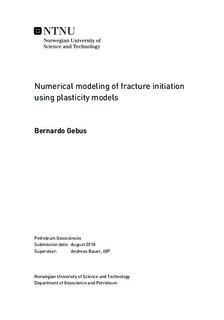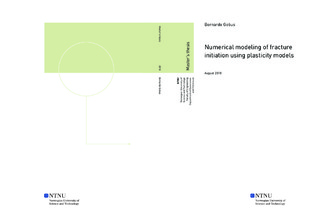| dc.description.abstract | Nowadays hydraulic fracturing is a key part of the oil and gas industry to enhance the field's production. Therefore, is important to understand how fractures initiate and how to extract important information from them for further models. The aim of this work is to provide some insights about how the pressure declines with time during a Micro/minifrac test, discuss different techniques for minimum stress determination, and to create a numerical modeling to determine the fracture initiation using plastic models. To accomplish these goals the first part of the work is a theoretical review, in which it can be found the factor that controls the behavior of the pressure decline, followed by fundamentals and advantages of two methods for minimum stress estimation (system stiffness approach and G function). The second objective, is to perform the numerical model by mimicking a typical rock undergoing a normal stress regime at 3000 m depth with a well in the center of the model of 0.3 m radio, afterwards a mesh was built in which the cell size varies depending on the location of the elements, being 0.02m at the wellbore wall and 0.25m at the edge of the model. During each simulation, the pressure inside the well is increased at different injection stages, simulating a fracturing operation. The rock properties are constant during all the simulations besides the hardening rule. It was found that only by changing the hardening rule is unlikely to reach the tensile failure criteria and initiate the fracture; as a matter of fact, at the highest well pressure, it was noticed a stress cage that builds up tangential stress making more difficult to fracture the rock. Another important part of this work was to assess the effect of the packer on the rock, the results show a plastic zone deformation that goes beyond the packer and generates some damage to the rock above and below the packers. | |

